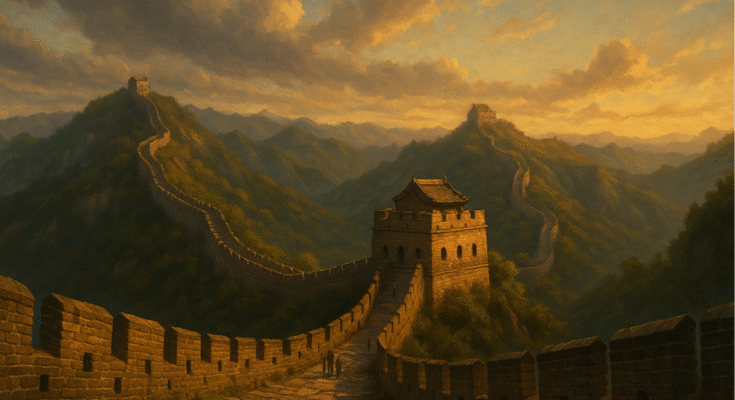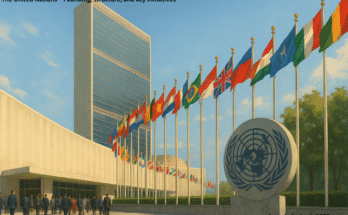
History, significance and Legends Overview Great Wall is one of the largest building projects ever constructed that spans over 13,000 km through the plains and mountains of the northern part of China. It’s a huge wall of defenses that was built, renovated in 7th century BC and around 17th century C.E. much more than just a single wall. The Wall symbolizes imperial power, cultural exchange and collaboration of millions of individuals far more than as a barrier for defense. This page focuses on its early origins, its peak of its progress in its peak during the Qin and Ming dynasties, its many applications, as well as the enduring tales associated with its history.
Pre-Unification Walls and Early Fortifications
In order to stop nomadic raids numerous Chinese states, such as Qi, Zhao, Yan, Wei, and others established earthwork walls across their frontiers long ahead of when that the Great Wall took shape. They were built during the seventies of BCE and were constructed using wood posts, tamped soil and wooden stakes. Although they were a bit splintered they were able to establish conceptual foundations like garrison posts, beacon towers, as well as defense designs. In the Warring States era (c. 475-221 BCE) the “pre-Walls” supported small kingdoms that encouraged territorial consolidation as well as technological innovation in the military that would later aid the imperial endeavor.
Qin Dynasty: Integration and Preliminary Building
Qin Shi Huang proclaimed himself the Emperor First of the newly unification of China in the year 221 BCE. He was in charge of the joining of the walls that were already in place and construction of new defenses in order to safeguard the newly centralized China from the northward-facing Xiongnu attacks. The peasants of the army and thousands of laborers constructed fortifications made of dirt, wood and ground rammed over a period over three decades. These first fortifications comprised strongholds to facilitate the deployment of soldiers and beacon towers to signal the eastward direction, stretched starting from Lintao in Gansu until in the Bohai Sea. Despite the gradual degrading of many of the early Qin fortifications, their unifying defence concept was influential to the subsequent dynasties.
Extensions of the Han Dynasty
The frontier was expanded and strengthened by the Emperors throughout periods of the Western as well as Eastern Han periods (206 BCE-220 CE). In order to protect those Silk Road trade routes, the Han Wall was extended to the Hexi Corridor. It was important to note that in between China to Central Asia, these defenses safeguarded caravans that carried silk, spices, as well as horses. Han engineers built beacon towers and strengthened the foundations of walls, and built solid parts of the wall made of bricks and stones. Han’s contribution to Han made the Wall more prominent on both the economic and military strategy, even though it was lesser known than other wall structures like the Qin or Ming obstacles.
Disunity Period and Sui-Tang Renovations
China split in rival states in the wake of the fall Han the Han, and a large portion of the wall began to deteriorate. It was during the Tang (618-907) as well as the Sui (581-618) reigns made small repairs in order to secure the borders of their respective regions. Instead of barriers that were static, Chinese military attention moved toward mobile cavalry regiments. This meant that the Great Wall was mostly neglected up to the Ming period, when security for frontiers was more dependent on boundary deals and diplomatic marriages (heqin).
Ming Dynasty: The Golden Age of the Wall
The Ming Emperors (1368-1644) made wall maintenance prioritization following the collapse of the Yuan Dynasty, controlled by the Mongols for the purpose of keep out further invasions from steppes. Starting in 1403 under the reign of Hongwu Emperor, and gaining momentum during the reign of Yongle Emperor (1402-1424), Ming builders made use of more weather-resistant material, such as blocks, cut stones mortar and cut stone instead of the rammed earth. There was an extensive set of signal beacons watchtowers and troop barracks. It was the of the most famous areas within Beijing that includes Mutinyu, Jinshanling, and Badaling. In order to ensure structural integrity, Ming engineers refined angled embrasures, crenellated parapets and intricate drainage structures.
Methods of Construction and Work
The number of people and materials required for the construction of the Wall was staggering. According to the accounts of historical sources it was estimated that up to one million of workers — prisoners, peasants and soldiers worked on shifting shifts. Local stone was employed within sections that were close to quarry sites, while bricks were baked on site in areas that were more remote. The brick façades’ components were made with a mix of the cultivated soil and the cement-based sticky mortar. Garrisons were encased in watchtowers about 500m apart as well as beacon towers that provided fire signals and smoke for long distances. What was the end result was a multi-layered, flexible defense system that was able to quickly mobilise soldiers.
Symbolic and Strategic Objectives
The Wall’s primary function was to protect against nomadic tribesmen, it also served other purposes.
Controlling border security involves taking care of the collection of tariffs and checking tolls and other traffic, as well as regulating the travel and business through the frontiers of northern Europe.
Communication: Across hundreds of miles, alerts could be sent out quickly thanks to garrisons and beacon towers.
A symbol of power: Through showing imperial strength and in deterring rebellion The Wall proved the Emperor’s ability to consolidate large numbers of labor force.
Cultural Barrier and Conduit The Wall changed Sino-nomad relations through the promotion of cultural exchange through passes and routes, regardless of its stated purpose of keeping away “barbarians.”
Myths, falsehoods and beliefs
The Great Wall is the subject of several mythologies:
The Wall is easily visible in Space In contrast to common perceptions astronauts have reported that, without help the Wall can be distinguished from normal topography. The earthy hue and the smaller width are well-integrated with the natural surroundings.
Continuous Single Wall It is not one, solid structure The Great Wall is made up from a variety of often separated sections, which were built throughout the course of many centuries.
Slave Labor: While the use of forced labor was prevalent in particular by captives as well as criminals, a lot of labourers were paid by peasants, or soldiers performing their corvee responsibilities. Though labor was not easy and laborers had to be paid, they were able to stay afloat through the state’s supply.
Defense Failures: The Mongols have smashed through Ming defenses early in the 17th century. They proved the Wall regardless of its size is not immune to invaders of all kinds. It did, however, influence border diplomacy, and postponed raiding.
Conservation and Preservation
Erosion, growth of vegetation and illegal stone theft in local construction and destruction caused by tourists in mass are among the many human and environmental issues that confront the Wall in the present. Community-led conservation efforts are being undertaken in remote areas to the restoration of structural damage in Badaling the Chinese State Administration of Cultural Heritage as well as UNESCO collaborate to carry out conservation efforts. Innovative techniques that seek to find a way to balance preservation and authenticity includes drone mapping for assessments of damage and the use of sticky rice mortars for repairs.
Tourism and Cultural Impact
Many filmmakers, writers as well as artists have benefited from many of them by the Great Wall. It is a symbol of cultural strength as well as patriotism. With millions of tourists visiting the Wall annually, walking the areas of the Wall is now a cherished ritual in modern China. It’s often featured in travel books, documentaries and in the curriculum of all over across the globe. These areas can be used to host events such as races and festivals that blend history and modern day recreation.
The Global Consciousness Great Wall
It is believed that the Great Wall is revered around all over the world for being it is a UNESCO World Heritage Site and among the New Seven Wonders. It remains an essential place to visit and included among the top architecture achievements of the world. Researchers who are researching similar fortifications, including Hadrian’s wall and Roman limes in Europe and beyond, attend the conferences of academics on frontier archaeology. The impact of the Wall extends far over China’s borders, making it possible the cross-cultural exchange of ideas and studies regarding the ancient defense systems.
To conclude
From the humble earthworks of earlier empires to the brick-and-stone marvels of the Ming dynasty. The Great Wall of China captures thousands of years of Chinese the past. It is used for military, economic and even symbolic functions as well as a symbol of the power as well as the logistical power of subsequent monarchies. The myths surrounding its durability the wall’s visibility, its status, and methods remain in place, but studies and conservation projects assist us in gaining a better understanding of it. It is the Great Wall, with its intricate ramparts that twist and turn, connects between the present and past, and is a symbol of humanity’s aspirations and identity. It’s an amazing fusion of nature, architecture and legend.



